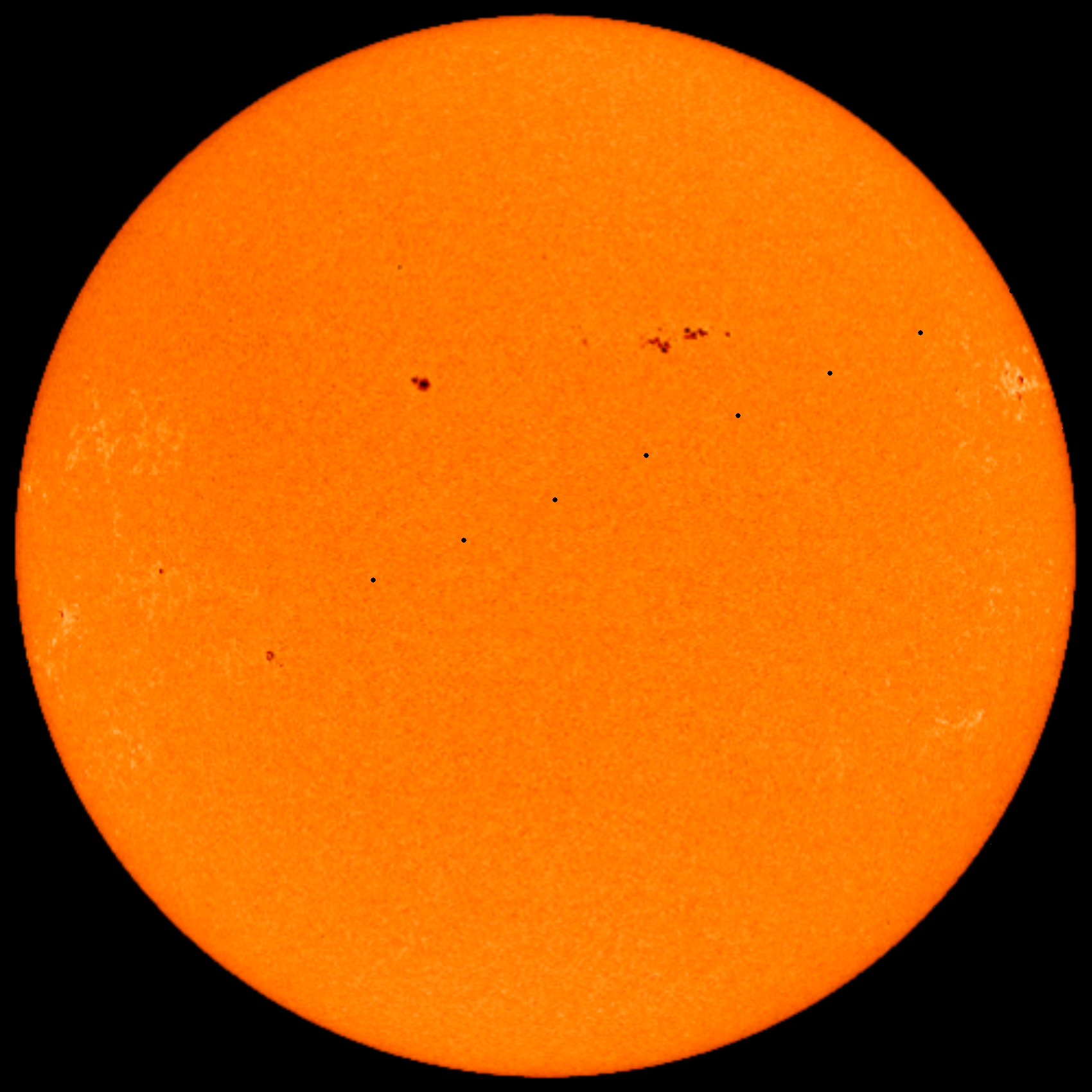
The Solar Transit of Mercury
Monday, November 11th, 2019
This is the first time Mercury will pass directly between the sun and Earth since May 9th, 2016, and the last time until November 13th, 2032. (The next Mercury transit visible in Idaho won't be until May 7th, 2049). This event cannot be viewed without a properly-filtered telescope or other similarly-equipped optics.
 Simulated solar-filtered telescope view of Mercury (black dot) as it moves across the sun's face in half hour intervals, from 7:30 (left of center) to 11:00 AM MDT
(upper right). (Sunspots are for illustration purposes only—sunspots on the actual day of the transit, if any, will be different in both size and location.)
Simulated solar-filtered telescope view of Mercury (black dot) as it moves across the sun's face in half hour intervals, from 7:30 (left of center) to 11:00 AM MDT
(upper right). (Sunspots are for illustration purposes only—sunspots on the actual day of the transit, if any, will be different in both size and location.)
Mercury transit timeline
All times listed are in Mountain Standard Time (UT-7 hrs.). Sunrise time is given for Twin Falls, Idaho, USA.- 5:35 AM — First contact. Mercury begins to cross sun's face (pre-sunrise, not visible from Idaho).
- 5:37 AM — Second contact. Mercury appears as black dot completely on sun's disc (pre-sunrise, not visible from Idaho).
- 7:15 AM — Centennial Observatory opens for free solar telescope viewing, weather permitting. Please dress warmly!
- 7:24 AM — Sunrise. Mercury already visible as a tiny black "ink drop" (silhouette) to the lower left of the center of the sun's face (only with visible with solar-filtered telescopes).
- 8:20 AM — Greatest transit. Mercury makes its closest apparent approach to the center of the sun's disc.
- 11:02 AM — Third contact. Mercury's leading edge appears to contact the edge of the sun's disc.
- 11:04 AM — Last contact. Mercury exits the solar disc, ending the transit.
- 11:15 AM — Observatory closes.